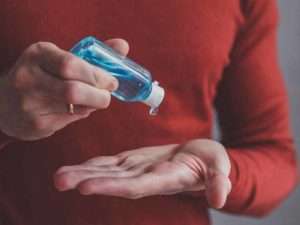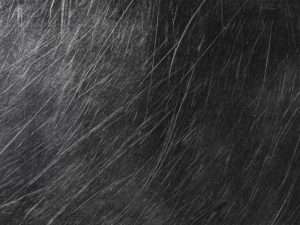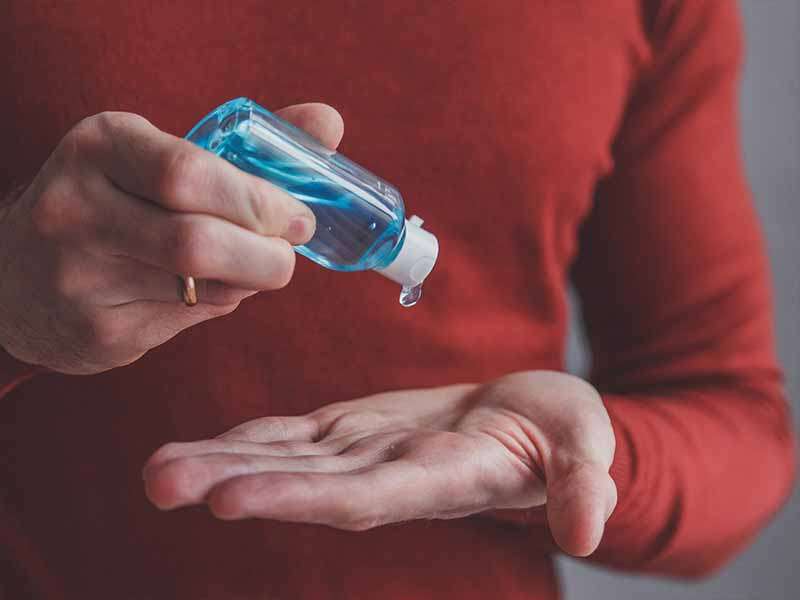Table of Contents
Car scratches can be frustrating but are challenging to avoid. Any scratch can be fixed, though. It’s just a matter of knowing how to tackle the different types based on how deep the scratch penetrates.
Surface scratches are the most common and, fortunately, the easiest to fix. As they go deeper, though, the repair difficulty rises.
Types Of Car Scratches
Clear Coat Scratches
Base Color Coat Scratches
Primer Scratches
- Bare Metal Scratches Or Exposed Plastic
It’s possible to fix any scratch yourself at home, but you may want to leave the more severe scratches to the body shop, depending on your skills.
While surface scratches aren’t urgent, they do dull your vehicle’s paint. Deep scratches can cause problems if not corrected sooner rather than later. Scratches down into metal can rust or cause paint layers to begin peeling. Fixing these should be a priority.
This article will explain how to identify various types of car scratches, the paint layers they affect, and the different ways to fix car scratches.
Car Paint Layers
Before discussing the various types of car scratches, it’s important to understand the different layers of paint on your car or truck. We’ll start with the bare body panel and work our way up to the outermost layer:
Bare Steel, Aluminum, or Plastic
The body panel is the raw surface of the exterior of your vehicle. This panel is typically made of either steel, aluminum, or plastic, although other materials, such as carbon fiber, may be used as well. Bare steel is highly reactive to the environment and can quickly develop rust. Aluminum and plastic don’t suffer this problem.Primer
Primer is the first coating applied on top of the raw body panel. The purpose of primer is to help create a good bond between the bare body panel and the paint layers. Primer bonds well with the panel and the color coat applied on top of the primer.Base Color Coat
The base coat, also known as the color coat, is a series of multiple layers whose primary function is to give the paint a particular color. These layers can contain metallic flakes or other additives to provide a unique look to the paint color.Clear Coat
The clear coat is a thick transparent polymer coating that protects all the other layers. The clear coat is crucial and can endure quite a bit of environmental erosion, ultraviolet rays, heat cycling, dust, chips, chemical damage, and scratches. The clear coat is a sacrificial coating that absorbs these abuses to protect the primer and color coat beneath. Unfortunately, it suffers damage from all of these external attacks. But it does so to protect the layers beneath.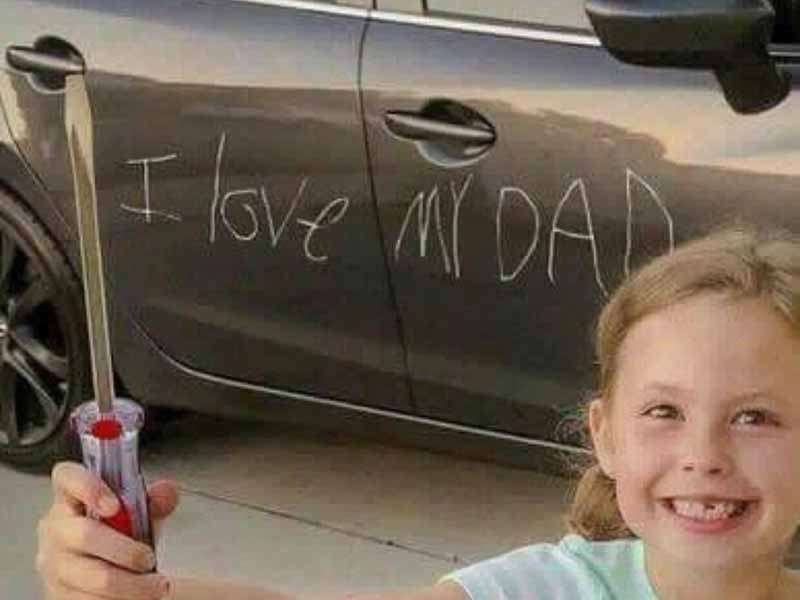
Types Of Car Scratches Explained
There are four types of car scratches:
Clear Coat Scratches
Base Color Coat Scratches
- Primer Coat Scratches
- Exposed Metal or Plastic
All scratches do not use the same approach when fixing them, and it is essential to know the differences between them, how to identify them, and the various methods of correcting them.
Clear Coat Scratches

These are the most common type of car scratches, and literally, almost every vehicle has them. Even brand new cars typically have some of these light scratches. Clear coat scratches are almost impossible to avoid.
The common reasons why vehicles get clear coat scratches are:
- Road grime and debris
- Improper washing techniques
- Touching paint with hands
- Leaning against painted body panels
- Placing items on the vehicle
- Tree branches and shrubbery brushing against the painted surfaces
- Light Vandalism (Keying, etc.)
How to identify clear coat scratches
Typically, clear coat scratch only affects the gloss or shine of your vehicle. It isn’t easy to see these scratches unless you use a flashlight directly pointed at the paint. You can also see these swirls and fine scratches more easily in direct sunlight and darker colored paint.
A clear coat scratch is the least severe scratch, and you don’t have to worry that it will cause your car to rust or ruin your car’s paintwork.
Fingernail Test
You may hear people mention using the fingernail test to see how deep a scratch is. If your fingernail catches on a scratch, it’s penetrated beyond the clear coat layer.
However, one downside to the fingernail test is that it can easily cause more scratches where ever you drag your fingernail across. If you’re already dealing with a scratch in the area and are planning to fix it, you probably don’t need to worry about this. But if you’re not going to address it right away, you may not want to try this test method.
How to fix clear coat scratches
A clear coat scratch happens easily, but it’s also one of the easiest to correct. Detailers polish the surface with a very mild abrasive to fix clear coat scratches. The polish wears away a thin layer of the clear coat and removes the surface scratch or swirl.
Fixing a clear coat scratch is straightforward, and almost anyone can do it. To do this, you have three options:
Hand polish the vehicle
Hand polishing is the safest method for removing swirls and fine scratches, but it isn’t practical to polish the entire painted surface of your truck or car’s paint.
It’s a simple process, though, and great for dealing with problem areas or difficult spots that a dual action polisher can’t reach well.
For mild scratches, you can use a polishing compound. A rubbing compound is more aggressive for more extensive swirls and scratches and will work faster. However, rubbing compound doesn’t provide the same gloss or shine as a polishing compound. You will need to follow any rubbing compound with a polishing compound to restore the shine properly.
Machine polish the vehicle
Dual-action polishers are the tool of choice for removing clear coat scratches. Many people are hesitant to use these rotary polishing machines, but they are reasonably safe. As long as you’re paying attention to what you’re doing, you shouldn’t have any real problems.
DA polishers are called dual action because not only does the polishing head spin, but the entire head orbits as well. Combining a spinning pad on an orbiting helps randomize the polishing action to prevent patterns such as holograms from appearing in the paintwork.
Quality DA polishers also stop spinning when too much pressure is applied. This failsafe feature helps prevent wearing through the clear coat too quickly. Wearing through the clear coat is also referred to as burning the paint.
Dual-action polishers are very beginner-friendly and make an otherwise tough job relatively easy.
Base Color Coat Scratches

Base coat scratches are those that penetrate through the clear coat and down into the color paint layer of your finish. These more severe deep scratches are more difficult to correct and require more than polishing to remove.
Some common reasons for deep scratches are:
- Door dings
- Car accidents
- Rocks and other road debris
- Vandalism (keying, etc.)
How to identify base color coat scratches
The easiest way to tell if the scratch has penetrated through the clear coat is to use the fingernail test. If you drag your fingernail perpendicular across the scratch and it catches on the jagged edge, you know you have a base coat scratch that won’t be resolved by simply polishing.
How to fix base color coat scratches
Unfortunately, base coat scratches require a much more involved process to fix. But they can be fixed! The process is as follows:
- Sand down the edges of the scratch so that it no longer catches your fingernail
- Clean with rubbing alcohol to remove any oils or anything that might prevent touch up paint from adequately adhering
- Layer touch-up paint, allowing it to dry well between layers until the touch-up paint is layered higher than the surface of the original paint
- Wet sand or compound the touch-up paint layers down until you can run your finger across the area and the transition from the touch-up paint and the original paint is smooth
- Apply 2 layers of clear coat touch up with a small amount of overlap onto the original paintwork
- Wet sand or compound the clear touch up so that it is level with the original car’s paint
- Clean again with rubbing alcohol
- Polish the entire panel
ChrisFix on YouTube does an excellent breakdown of the entire process. I highly recommend you watch the following video to get a detailed explanation of precisely what is involved with each step.
Chris uses wet sanding to knock down the touch-up layers, but you can use rubbing compound and polishing compound with a dual-action polisher if you prefer. Wet sanding is great for smaller jobs. Bigger jobs will benefit from the use of a DA polisher.
Also, as Chris points out in the video, older vehicles suffer from paint fade. Touch-up paint will not be faded, so depending on the amount of fade and the color of your car or truck, you may have a slightly noticeable color difference.
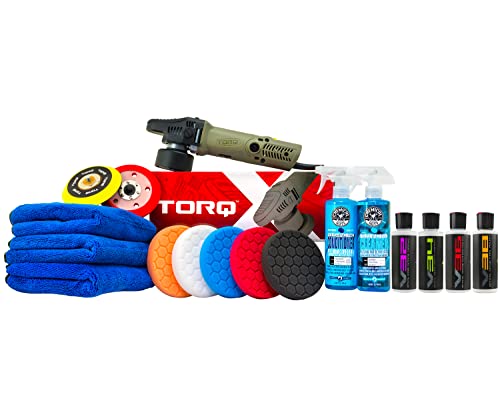
Primer Scratches

Primer scratches are deep scratches that pass through the clear coat and base coat and cause damage to the primer.
How to identify primer scratches
Primer scratches are easily identified by the different color that is exposed within the scratch.
It can sometimes be difficult to tell if a primer scratch is only in the primer or through the primer and exposing bare metal or plastic.
How to fix primer coat scratches
The process for fixing primer scratches is no different from fixing color coat scratches. Your vehicle’s paint and touch-up paint bond well with the remaining primer. Follow the same steps to achieve excellent results.
Exposed Plastic or Bare Metal Scratches
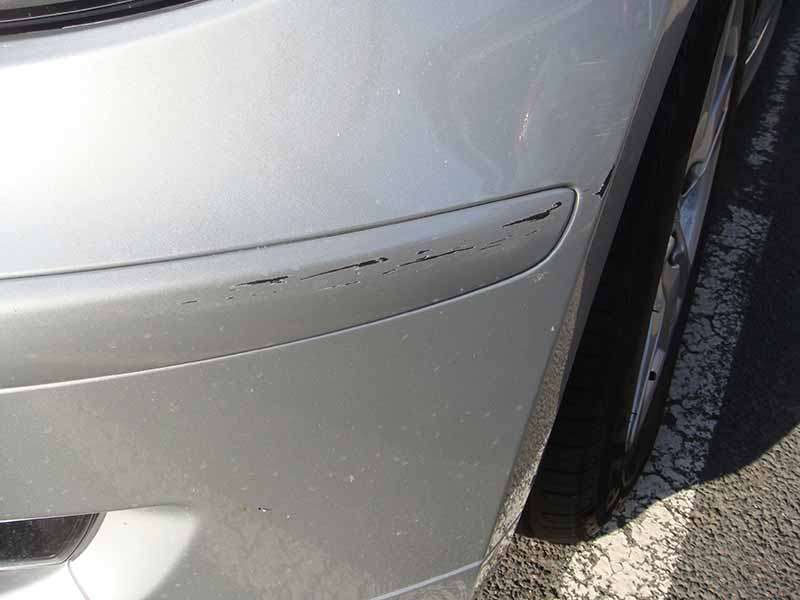
How to identify exposed plastic or exposed metal scratches
Like with primer scratches, the paint color within the scratch is gone. If your body panel with the scratch is metal, it’s easier to identify since metal is quite distinct from any time of primer. If your body panel is plastic, the scratch will usually appear black, although some primers can be very dark in color.How to fix exposed plastic or exposed metal scratches
Again, follow the same process described for fixing base coat scratches. While there may not be any primer coat there to help the touch-up paint adhere to the body panel, the touch-up paint will adhere to the adjacent original car’s paint and shouldn’t be a problem. The one difference to pay attention to here is to ensure that any rust on exposed metal is removed before applying touch-up paint. A sanding pen is a great tool for getting into scratches and removing rust that may have occurred before you’ve had a chance to touch up the scratched area.How To Protect Car Paint From Scratches
Peeled vehicle paint, scratches, and rust spots will significantly lower the value of your car. While its mechanical parts may be in great shape, selling a car with deep scratches reduce its value.
Here are a few methods you can use to protect your car from scratches:
Paint Protection Film
Nothing provides better paint protection from scratches than PPF. Paint protection film is a thick sticker-like material that can absorb hits from small rocks and similar debris. It’s not impossible to penetrate, but it will make a dramatic reduction in the number of rock chips and deep scratches that will be able to appear in your vehicle’s finish.
PPF is not DIY friendly, although it isn’t entirely out of the question. However, having PPF applied to your car or truck by a professional is quite expensive. You’ll want to do your research before deciding to have it applied to your vehicle.

Ceramic Coating
Ceramic coatings come in both DIY and professional-grade formulations. They won’t prevent rock chips or deep scratches, but they will prevent fine scratches and swirls in your clear coat.
Ceramic coatings are very popular and make keeping your car or truck clean much easier. Professional grade coatings typically last longer, but DIY coatings perform very well.
Regular washing, wax, and clay bar treatment
Keeping your vehicle cleaned, decontaminated, and protected from environmental elements will help reduce the opportunity for fine scratches and swirls on the surface of your paint job.
Just be sure to follow the proper methods for washing to reduce the opportunity of causing scratches during the cleaning process.
Defensive parking
Parking lots are minefields for scratches. If you want to protect your vehicle, park further away from other cars. Being careful where you park will prevent accidents due to careless parking, shopping carts, and vandals.
Keep your keys secured
If you leave your car keys dangling, either in your hands or in a door lock, they can leave tiny scratches on the door and other body panels. An easy solution is to train yourself to always keep your keys in your pocket or purse.
Don’t place objects on your paintwork
Do not put backpacks, satchels, and purses with metallic items on the roof of your car. They can easily cause vehicle scratches, especially if they start to slide off.
Install mud flaps
Mudflaps are helpful because they prevent tire spray from flinging rocks and other road debris up onto your paintwork. You can install mudflaps on the rear of your wheel wells to keep dirt, water, small stones, brake dust, and salty slush from collecting on the rear bumper or behind the front tires.

Use a car cover
A car cover can help prevent environmental contaminants, such as bird droppings, pollen, and tree sap. Car covers are also great for protecting the paint from chips and scratches from nearby traffic, lawnmowers, kids playing, and other things that might bump or scratch your finish. A car cover can also prevent damage from acid rain, dust, UV damage from the sun, and potentially light hail if you purchase a thicker cover.
Frequently Asked Questions
What is considered a deep scratch on a car?
A deep scratch is considered anything that has penetrated through the clear coat of your car’s paint. You can easily correct light scratches with polishing, but deep scratches require significantly more effort.
Do car scratches rust?
Only scratches that have penetrated through all of the paint layers and if the body panel is steel will rust. Aluminum and plastic panels will not rust, and scratches that don’t penetrate all paint layers will still protect steel body panels from rust.
How do body shops fix scratches?
To avoid problems with paint matching, body shops will sand down the entire area around a scratch and build the layers back up. They will blend the paint into the original paint to make any differences in color less noticeable.
What is the difference between a scuff and a scratch?
Scuffs typically affect a larger area of your car’s body, while a scratch generally is a fine line. Essentially, scuffs are a group of scratches, but not all are scuffs.
Does waxing a car remove scratches?
No, waxing does not remove scratches. Waxing is the application of a paint protection liquid or pastes onto the surface. Car wax is commonly confused with polishing. Polishing is the process of grinding away a thin layer from the surface of your paint’s clear coat to smooth the surface and produce a shine.
Does polish remove scratches?
Yes, polishing will remove lighter scratches, swirl marks, paint holograms, and other minor surface paint damage. Polishing removes these light clear coat scratches and blemishes by removing a thin layer from the top of your vehicle paint’s outermost layer, leaving a smooth surface.
Can you buff out deep scratches on a car?
Deep scratches in car paint can not be polished or buffed out. They will require touching up to restore the removed paint and fill in the crevice.
Are car scratches worth repairing?
Most scratches are cosmetic and are only worth repairing if you value your car or truck’s look or plan to resell your vehicle.
The worst scratches that expose the metal beneath should be repaired. If left untreated, these deep paint scratches will leave the metal surface unprotected, and it will begin to rust.
How much does it cost to fix a car scratch?
Paint scratch repair cost will depend on the severity of the car scratch, location, and size. The type of vehicle and the paint combination you require will also affect the cost.
Does insurance cover scratches on a car?
Your auto insurance will cover paint scratches if they match with the predetermined causes in your policy document, such as vandalism or collision damage.

Helpful Links
Conclusion
A car that looks good maintains its value. Unfortunately, car scratches are a common occurrence, and you can’t practically avoid them easily, although you can minimize the risk.
Repairing deep paint scratches that expose the bare metal surface beneath will save you money in the long run. Left untreated, these deep scratches will begin to rust and cause much more damage than an unsightly mark. Minor scratches are less of a concern and typically just cosmetic, although they can affect resell value.
With a bit of elbow grease and a touch-up kit, you can repair any scratch yourself. If you’re particular about the outcome or just not satisfied you have the skills to do the job well, you should leave the job to your local body shop.

